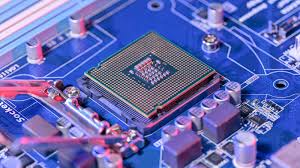The Impact of Chip Shortages on Computer Repairs and Upgrades
The global chip shortage has affected many industries, and computer repairs and upgrades are no exception. With semiconductor supply chain disruptions, repair shops and consumers face difficulties sourcing essential components. These shortages have led to increased costs, extended wait times, and limited availability of certain computer parts. As more people rely on their computers for work, education, and entertainment, the impact of these shortages is becoming increasingly apparent. We will explore how chip shortages have changed the landscape of computer repair in west palm beach and upgrades, affecting businesses and consumers in ways that extend beyond higher prices.
Rising Costs and Limited Availability of Components
One of the most significant impacts of the chip shortage on computer repairs and upgrades is the rising cost and reduced availability of critical components. Chips are essential for many computer parts, including motherboards, graphics cards, processors, and memory modules. When supply chain disruptions occur, manufacturers struggle to meet demand, increasing prices for available components. Consumers who need to replace or upgrade parts are often left with fewer choices and inflated costs.
Graphics cards have been among the hardest-hit components, with prices sometimes doubling or even tripling due to shortages. The increased demand for gaming, cryptocurrency mining, and professional computing applications has further strained supply. As a result, individuals looking to upgrade their computers for better performance may find it difficult to afford or even locate the parts they need. Processors have also seen shortages, particularly high-performance models used for gaming and content creation. The limited supply of these chips has made it challenging for repair shops to maintain stock, often forcing customers to wait weeks or months for replacement parts.
Motherboards and memory modules have also been affected, as they rely on multiple chips to function properly. Manufacturers prioritize high-margin products without sufficient supply, leaving lower-end and mid-range components in short supply. This impacts consumers who need budget-friendly options for repairs and upgrades. Even simple repairs, such as replacing a damaged motherboard or upgrading RAM, can become expensive due to limited stock and rising prices. The combination of high demand and supply constraints has created a situation where even basic computer maintenance has become costly and time-consuming.
Longer Repair and Upgrade Wait Times
Another major consequence of chip shortages is the extended wait time for computer repairs and upgrades. When parts are not readily available, repair shops must order components from suppliers who may also be facing shortages. This delays the repair process, leaving customers without their devices for extended periods. These delays can lead to productivity losses and frustration for businesses and individuals who rely on their computers for daily tasks.
The impact is particularly severe for those in remote work or education settings. With an increasing number of people working and studying from home, having a functioning computer is essential. Due to supply constraints, a simple hardware failure that typically takes a few days to fix may take weeks. This can disrupt work schedules, cause missed deadlines, and create additional stress for those relying on their computers.
Businesses that provide computer repair services are also feeling the strain. Shops that previously maintained stock of common replacement parts are now struggling to keep up with demand. Some repair businesses have had to turn customers away or put them on long waiting lists due to the unavailability of essential components. This impacts customers and the revenue of repair shops, many of which are small businesses that depend on a steady flow of repairs to stay profitable.
The process has become significantly more complicated, even for those attempting to upgrade their computers rather than repair them. Enthusiasts who build their own PCs often face difficulty in finding compatible components at reasonable prices. Many are forced to settle for older or lower-performance parts because newer or more expensive models are unavailable. This has slowed the usual upgrade cycles, with many users holding onto older systems longer than originally intended.
Read more : Sump Pump Repair Service
Adaptation and Alternative Solutions
Despite the challenges of chip shortages, consumers and businesses have been finding ways to adapt. Many repair shops have started sourcing refurbished or second-hand parts to meet demand. While this may not be ideal for those looking for brand-new components, it provides a viable alternative for those needing a functioning system. Refurbished components can extend the life of existing hardware, allowing users to delay expensive upgrades until supply stabilizes.
Manufacturers have also been exploring different approaches to mitigate the impact of chip shortages. Some have adjusted their production lines to focus on the most in-demand products, while others have begun developing alternative designs that use more readily available components. While these strategies help somewhat, they do not eliminate the problem, as supply chain constraints remain a global issue.
For consumers, patience and flexibility have become essential. Many who initially planned to upgrade their computers instead chose to optimize their current systems. Simple software improvements, such as updating drivers, optimizing settings, and cleaning up unnecessary files, can help extend a computer’s usability. Others have opted to purchase pre-built systems instead of individual components, as manufacturers often have direct access to chip supplies and can produce complete systems more efficiently than individuals sourcing parts separately.
Businesses have also adapted by offering more rental or temporary solutions. Some companies provide loaner computers to clients waiting for repairs, allowing them to continue working while their devices are being fixed. This approach has helped minimize disruptions, particularly for professionals who cannot afford extended downtime. Additionally, cloud-based solutions have gained popularity, enabling users to rely on virtual desktops and cloud computing resources rather than solely depending on local hardware.
Chip shortages have significantly impacted computer repairs and upgrades, affecting costs, availability, and wait times. Consumers and businesses have had to find creative solutions to navigate these challenges, from using refurbished parts to optimizing existing hardware. While the situation is improving, it will take time before supply chains fully recover.

